Weekly Blog 10
I enjoyed this course. I was worried going in with the ePortfolio portion of this class, however as I gained confidence in working with WordPress I really appreciated that aspect. As for the course objectives, I am confident that I have completed all of them over the course of this semester. My favorite of the objectives to expand upon were the sections of prejudice and discrimination, and the formation of close relationships. By writing about and discussing these topics in my blog posts and assignments, I feel as if I have a good grasp on the subject material.
I don’t know if I can say I have had much of an attitude change in my exploration of social psychology. I was excited to learn the material of this class, and I stayed excited as I continued to read and study the subject. If I were to do something differently in my handling of this class, I think I would have dedicated more time in the week to the assignments. I tend to be a chronic procrastinator, which was not helped by the fact I took this as a summer course. I think a stronger implementation of schedules in my academic career would be beneficial for myself.
As for a skill I have learned through this class, I would say the use of WordPress is definitely up there. I am a UTA for another class, and part of that requires the use of WordPress to make a teaching portfolio. Because of this class, I had to learn how to effectively use this platform to make a professional website. This skill is already helping me in other classes, and will likely continue to benefit me later in my career as the internet is becoming more integral to daily life.
I choose this cute wordcloud for my last blog post as it contains a lot of the material covered over the course of this class.
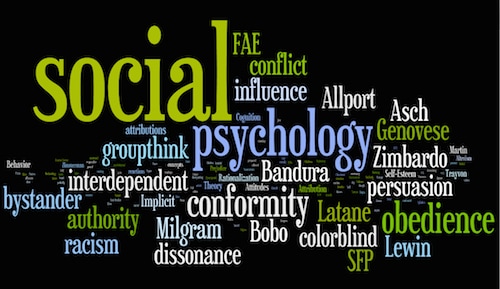
Weekly Blog 9
I learn best when I have something to write in reference to the material. Therefore, to prepare for this blog, I went back over everything I have written for this class to decide what I consider to be my top three things I’ve learned. I believe my top three would include heuristics, self- efficacy, and more on prosocial behavior. Each of these topics have been covered in my ePortfolio, ATA 1, Blog 2, and ATA 5 respectively. I choose these as I feel like they have broad application to the psychology field as a whole, and were also some of the most enjoyable sections to study; hence their inclusion.
Heuristics for instance have a very wide range when it comes to social psychology. Heuristics are essentially short cuts for the brain to take when evaluating the environment, people, and things around us. Within social psychology this is likely the most applicable when discussing the availability and representativeness heuristic, as these can work as a shorthand when understanding the people around us, for better or worse. For this reason, heuristics can directly tie into the discussion of stereotyping, as discussed in chapter six of the textbook. Though ingrained ideas of how certain minorities act, some heuristics may latch onto this idea and start using the stereotypes as shortcuts.
Prosocial behavior can also tie into heuristics, such as the status quo heuristic. The status quo heuristic is exactly what it sounds like, it is the preference to maintain what your brain considers to be normal. This might play into kin selection theory, as helping people that are similar to us might help maintain the status quo. This plays into the larger theme of the brain of preferring things that we perceive as similar to ourselves.
Bandura’s self-efficacy theory has always been a favorite of mine. The first I had heard of it was in reference to positive psychology. The discussion of self- efficacy in this class was mostly in reference to understanding the implications of certain scores (low lines up with depression, high could mean more optimism for instance), while the discussion in positive psychology focused on the benefits of a high self-efficacy. This includes the many health benefits that can come with a high self-efficacy, including improved biological functions, as well as an increased likelihood to abstain from destructive health behaviors. Interestingly, it also covered collective self-efficacy, which is a group’s belief in their ability to complete a task. This is directly relevant to social psychology, as the study is of society.
The image for this blog is the cover of the textbook for this class, as well as for the positive psychology class I took. This blog had me looking through my positive psychology textbook for the first time in a while, just to double check myself on its perspective of self-efficacy. I also had to dig through some of the early chapters of the textbook for this class, to be sure my connections made sense.
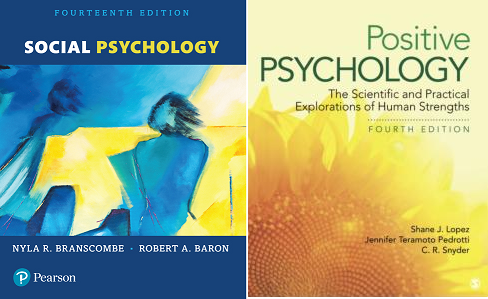
Weekly Blog 8
I have never personally been a fan of evolutionary psychology. While I understand why it exists, as we did evolve our consciousness and psychology throughout our existence, I have always felt it is to a certain extent an unsatisfying explanation of behavior. While there is a lot of validity to the claim that many behaviors stem from millions of years of evolutionary progress, removing one’s psychology and motivation from the context of a society strikes me as unwise. This is especially suspicious to me in the context of sexual relationships, particularly heterosexual ones. According to the article, within the heterosexual male population, they are looking for a large amount of partners, whereas heterosexual women are looking for a long term sexual partner. This is working with the idea that men look to impregnate as many women as possible to spread their genetics, where women would be the ones looking after said offspring, therefore are looking for a partner that will care for them and the child. This to me also can read clearly as gender roles instituted by a society. This can be reflected in current American society (and much of western civilization), where men get praised for their sexual conquests, and women get shamed for having more than one sexual partner. This begets the ever debated ‘nature versus nurture’ question, did society shape this notion, is it really part of our evolution, or maybe some of both.
That said, in the context of evolutionary psychology and sexual conflict, there are many ways in which each sex can upset the other. For instance, a point of contention when a heterosexual single mother goes back into the dating arena could be her parental status. This could be an example of sexual conflict, or a man being upset with a woman; as the mother has already taken on a child. An example of (again, heterosexual) men upsetting a woman could be their ‘rush’ to get to the sexual aspect of a relationship. Assuming that men want to mate with many people, they would likely feel hurried to have sex with someone for this end. This seems to be reflected widely in western media as well. This would upset the woman’s want to mate with caution, as that sort of decision might take time by her perspective.

My visual image for this blog is the cover of the book A Billion Wicked Thoughts by Ogi Ogas and Sai Gaddam. I read and wrote a review of this book for the psychology of sex class I took last spring. This book is an evolutionary explanation of sexual drives for heterosexual men and women, as well as homosexual men. It discusses much of the same ideas that the article for this blog did, where men seek to have sex with many, and women seek sex with more caution. In their analysis they do a great job at explaining the evolutionary perspective using the tangible data to explain mechanisms by which people become aroused.
Weekly Blog 7
Emotional intelligence describes one’s understanding of the emotions of themselves and others. For example, someone high in emotional intelligence would be able to effectively read the emotions of the people around them, and make inferences based on their feelings. They would also be able to recognize the feelings within themselves. A key aspect of emotional intelligence could be considered to be self regulation. Someone with good emotional intelligence could for instance recognize the fact they feel sad, and then use regulation techniques to cope healthily with said feeling.
Self regulation could also be a tool to improve someone’s emotional intelligence. As stated in the video, breathing techniques are useful in regulating emotional responses. Take an argument for example, if you have an argument with someone and are feeling angry and frustrated, a response to those feelings could go in a few directions. For instance, if you have poor emotional intelligence and self regulation, you may have little means to relate better to the person you are arguing with. This could lead to trouble in mutual understanding and agreement. A way to improve your emotional intelligence and self regulation in this situation would be to make a point to take a few deep breaths. By taking these breaths you are allowing your body to calm down, and to more rationally be able to view this situation.
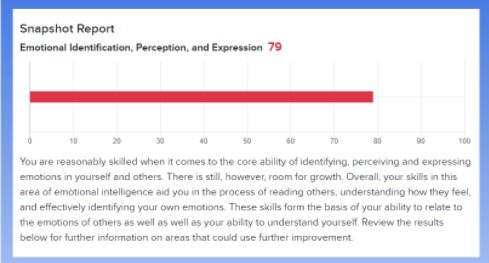
This image is my emotional intelligence score. I consider myself to be perceptive when it comes to the ability to read other people and what they may be feeling, so this result is about what I expected. The result does say I have room for improvement, and I believe it is referring to emotional intelligence in regards to my own feelings. While I am typically good at reading other people, I am also good at unhealthily suppressing my own emotions. I believe to improve this I should attempt to better understand what it is I am feeling in all situations, perhaps with the aforementioned breathing techniques.
Weekly Blog 6
It has never been a secret to me that advertisements sell an unhealthy and unrealistic portrayal of women and their bodies. Fortunately my early use of social media led me to a few different feminist blogs mixed in with the humor ones I typically liked to look at, as well as media critiques that sometimes included the dismantling and ridicule of these sorts of female stereotypes. These blogs and videos showed me that most portrayals of women were heavily photoshopped, and created unreasonable expectations for girls in adolescents such as myself. This is still my understanding. That said, the impact is still there. I often still find myself bitterly criticizing my body for gaining stretch marks or acne, for not having a thigh gap, or for supposedly having too much tummy. I am at least logically aware that these sorts of things happen to regular healthy people such as myself, however the effects of these sorts of advertisements are obviously very present.
With that background, the information in the video was not all that surprising to me. Something I found particularly interesting however, is the notion that while the formal sex education in the US is notorious for not giving satisfactory explanations for many things, the sexualized nature of advertisements are acting as a sort of filler ‘education’. This education however comes directly from the playbooks of the pornography industry, which is infamous for its harmful portrayals of both sexes, intimacy, consent, and violence. As said in the TED talk, as pornography becomes more mainstream, so do those portrayals of sex.
The above collage of advertisements I believe exemplify the ‘pornification’ of ads as discussed in the TED talk. The parallels between these advertisements and ads for real porn is uncanny. To see just how similar the ads were to pornography, I looked at porn advertisements. I wanted to include it in my blog for comparison reasons, however I decided against it due to the more graphic nature. Porn ads are not much better than the ones included though, as they portray women in the same objectifying manner. The Peta, Hardees, and American Apparel each place the woman’s anatomy in the focus of the advertisement. Peta goes so far as to compare a woman to an animal for slaughter, which in any other context might make for an apt critique of the porn industry. The American Apparel and Hardee’s ad use the woman’s sexuality to sell, with the American Apparel including close up shots of the woman’s face while she appears to be in a form of sexual ecstasy. The M&M advertisement features the green M&M, who is gendered female, in a state of ‘undress’, posed sexily for the camera, much like the other women in these advertisements. Needless to say, the male gendered M&Ms (who look much the same as the green) are not subjected to nearly as much sexualization.
The ad without a screenshot of the actual advertisement is for a racing game known as Juiced. This advertisement I felt was too explicit, however was too perfect of an example to not be talked about. It can be found on YouTube for those who are curious, though it is age restricted. The advertisement features two young men playing the game being advertised in their own car, while a young woman stands on the sidewalk nearby, idling. As the men customize their car, the woman outside gets ‘customized’ as well. The men realize this, and begin to strip her of her clothing (to her distress), resize her bottom and chest, all before putting her in a thong and bikini top. The finishing shot is of the logo for the game appearing on her butt. This advertisement hits all the marks of the poor portrayals of women. She is objectified through her comparison to a car, remodeled to fit the male’s beauty standard, and on top of it all; it’s done without her consent.
Weekly Blog 5

The credibility of the Mayo Clinic advertisement should almost be self explanatory. Mayo Clinic is well known for its reliable information and resources, as well as being a well trusted healthcare provider. Their expertise makes them into a credible source. It could be inferred that they are making a fear appeal during the advertisement, as they discuss having worries over one’s health. They do however provide a solution through their service at the end of the ad.

For the not credible advertisement, I selected the controversial Pepsi ad from 2017, wherein Kendal Jenner joins a nondescript protest and offers a Pepsi to the police officer (representing the opposition), who then takes a drink to the cheers of the protesters. A portrayal like this is done in bad taste and reflects poorly on the Pepsi brand. This advertisement makes the brand seem less credible, as by very notably pandering (and by proxy making light of real-life protests and issues) they have revealed an ulterior motive; making as much money as possible.
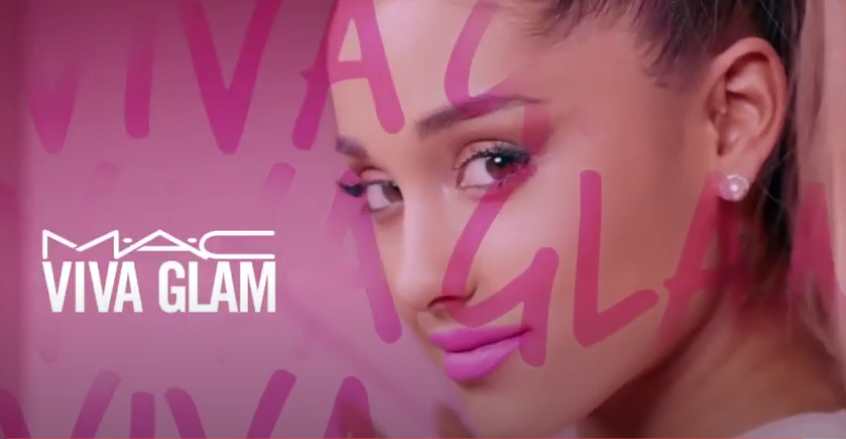
This advertisement is a good representation of using an attractive source to sell a product. Ariana Grande is a famous singer, and is often cited as being very beautiful. I chose this particular ad because I remember that it worked on me the first time I saw it. Using an attractive salesperson is a typical tactic of makeup advertisements, as it implies that with the product, someone could achieve the same level of beauty as the models.
Weekly Blog 4
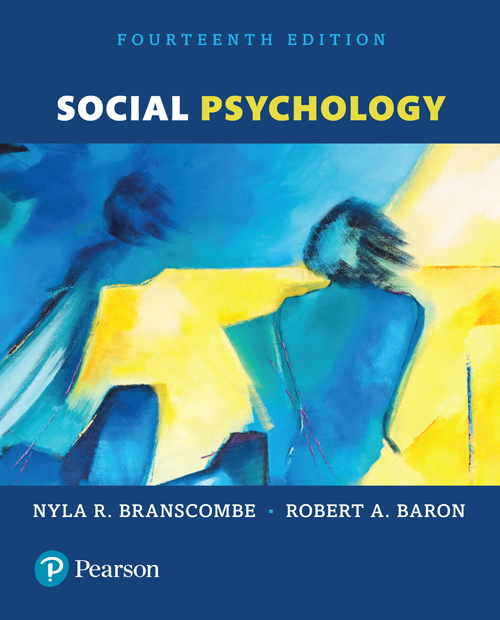
I am very proud of how I did on the first exam for this class. My study strategy to prepare for the first exam was to go through the textbook again, and pay particular attention to parts that confused me beforehand. My visual image is a screenshot showing the online textbook, which was integral to my studying. The textbook also comes with quizzes that can be used to study. Practice exams are my favorite method of studying, so this was particularly helpful to me. I can be notorious about not checking the review sheet, which can cause me to go over more than I need or missing certain things. That wasn’t too big of an issue for me on this exam fortunately, but my performance on an exam for another class reminded me of that recently. I will be sure to have it printed out for the next test, and go through it jotting down the answers, as writing like that helps me study.
I only missed one question on this test! It was about attribution, and I identified a scenario with the wrong attribution for the wrong reasons. Looking at the question, I think I may not have read it as closely as I should have. It’s always good to get a reminder to slow down and think about the question in front of you. I will be sure to implement this test taking technique the next time around. I looked back in the textbook on the chapter about attributions and found the correct designation for the scenario presented by the question.
Weekly Blog 3
I have a very eclectic music taste. I blame that largely on my parents, who have a similarly jumbled music taste to my own. Looking through the assigned reading, learning that music is more reflective of one’s values than personality made sense when an eclectic taste is taken into account. Music of any genre can give off similar messages, it just comes down to the type of sound that carries them. I have always enjoyed the point in a relationship where music was discussed for this reason. I feel like you can get to know the person deeper based on the music they enjoy and the meaning they place on it. A lot of times, this is how I find new music I enjoy. Finding new music through loved ones I feel like can strengthen your bond, because of the communication of shared values. I find a lot of overlap in the music I enjoy, and the music those close to me enjoy as well. Looking back on it, the music that has stuck with me that has been shown to me by my friends and family has normally done so because it has struck a chord with some aspect of myself or value of my own.
For instance, when my boyfriend and I were first getting to know each other, he shared with me one of his favorite songs by one of his favorite artists, Starman by David Bowie. In reference to him in particular, it meant to me that he enjoys the weirder, more creative side of things. My closest friend enjoys more of a combination of grunge and rap. When picking a song I associate with him, I chose Opaul by Freddie Dredd. This music is much more of an outlet for him, and the part he enjoys the most is the very messy sound of the music. This reminds me of him not only because we both used to blast it together while driving places, but also because he once told me the messy sound reminded him of how his brain worked while overwhelmed. The song I chose for myself is Parting of the Sensory by Modest Mouse. This is a song that I personally love and relate to, that is somehow a middle ground between the two previously mentioned songs. Modest Mouse is notoriously weird, and sometimes morbid. This song is an outlet for me (through similarly messy sounds), as well as a reflection of my values.
Playlist
Starman- David Bowie (my partner)
Opaul- Freddie Dredd (my best friend)
Box 15- Masafumi Takada (One of my friend groups)
Robot Rock- Daft Punk (my brother)
Spoonman- Soundgarden (my dad)
Parting of the Sensory- Modest Mouse (me)

Weekly Blog 2
My general self-efficacy score was 33 (maximum being 40). While my general self-efficacy is at a nice modest number, I think my self-efficacy as a student is a bit higher. I think of myself as a good student. In college, I have not gotten lower than an A- in any class. I turn in my assignments on time and normally receive high marks. I do my best to put as much effort as I can into any one assignment. This is likely the cause of my high academic self-efficacy. As I get validated as a good student through my work, my self-efficacy in that regard rises. I am very confident in my abilities as a student, however there is always room for improvement.
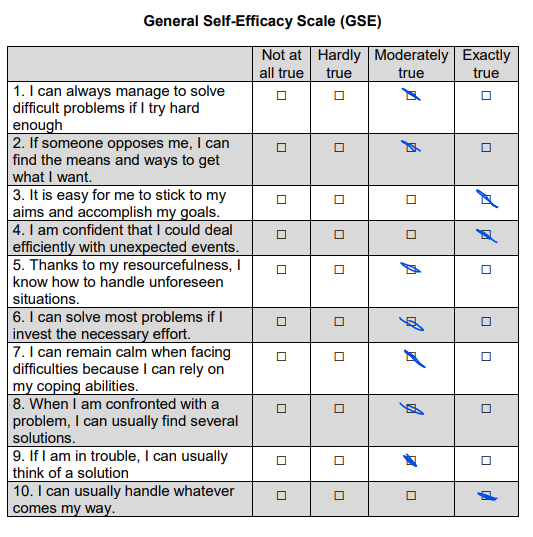
J. Weinman, S. Wright, & M. Johnston, Measures in health
psychology: A user’s portfolio. Causal and control beliefs (pp. 35-37).
Windsor, UK: NFER-NELSON
The Image I chose for this blog is of my responses to the general self-efficacy questionnaire, as I felt showing where I lacked confidence would be a good place to start when looking for ways to improve. Most of the answers that I marked myself lower on had to do with operating under pressure or uncertainty. In an academic setting, this can be fixed by adjusting a mindset away from the fear of failure. Failing, as much as I hate to do it, is part of the learning experience. By failing we prepare ourselves for the next victory. I believe another one of my issues that may contribute to my lower scores is my independence. I have never been a fan of group work, however it can be beneficial to have more than one mind working on a project at the same time. By opening myself up to that possibility more, I may set myself up for a higher self-efficacy in the future.
Weekly Blog 1
I am excited about this course and its unique WordPress element. Learning to make a portfolio will help with other portfolios I may make further down the line. I choose this meme to represent this first blog post, as that is going to be the motto for this class it seems! I am looking forward to my many future updates.
I hope to gain a complete understanding of the concepts presented in this class. Social psychology is a wide subject, with a lot of different pieces to it. While it may be difficult at times, I look forward to the challenges brought by the material in this course. I also find the nature of relationships interesting and am excited to learn about how we all try to understand each other. This will be useful in my personal life, as I relate to the people around me. This is also useful for my goal of becoming a clinical psychologist. For instance, the relationship objective will be helpful, as these connections can be at the heart of many issues, therefore learning their intricacies and pitfalls, I will be better equipped to help people.
I do expect this course to be a challenge, due to the new method of assignments through the ePortfolio. I will try my best to stay ahead of schedule so that I have ample time to complete what I need to before it is due.